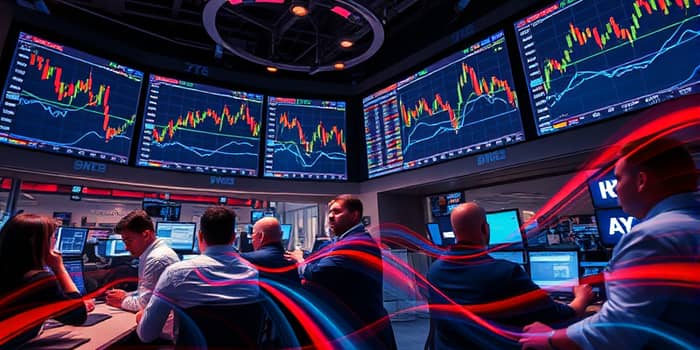
As global markets entered 2025, an sharp and temporary rise in volatility awakened traders to new possibilities. After years of subdued price swings, April’s tariff announcements triggered a powerful market selloff. Investors saw the VIX index—often called the "fear gauge"—climb well above its long-term average, signaling renewed demand for specialized volatility strategies.
Today’s environment demands a deeper understanding of risk dynamics. Volatility traders who master the art of timing, pricing, and hedging are finding opportunities where directional investors often fear to tread. In this article, we explore the forces behind this resurgence and offer practical guidance for engaging volatility markets with confidence.
In spring 2025, various forces converged to push volatility metrics far beyond historical norms. Geopolitical tensions—from the Ukraine-Russia conflict to disruptions in the Red Sea—combined with escalating tariffs and policy uncertainty under a unified government. The Federal Reserve’s decision to hold interest rates steady, alongside a steepening yield curve and elevated long-term Treasury yields, further amplified market jitters.
As a result, the VIX averaged 27.5 year-to-date, markedly above its 19–20 historical range. Simultaneously, the MOVE index for bonds registered similar stress, reflecting widening swings in fixed-income markets. Investors in low-volatility stocks such as Berkshire Hathaway, Coca-Cola, and Mastercard reaped defensive performance, but volatility specialists saw these conditions as fertile ground.
Together, these factors fostered an environment where both realized and implied volatility surged. Traders equipped to interpret these signals found avenues for both profit and hedging, leveraging the wide option premium differentials that emerged.
Volatility traders differ from directional investors by focusing on the magnitude and speed of price moves rather than their direction. They harness mean reversion strategies to capture volatility normalization and exploit imbalances between implied and realized volatility. Key approaches include:
When implied volatility is high, premiums become expensive. Sellers benefit from sharply priced options premiums during volatility spikes, collecting income that tends to decay over time. Conversely, buyers gain when volatility is expected to accelerate, locking in lower-cost contracts that can surge in value if realized volatility outpaces expectations.
Successful volatility trading relies on precise measurement and robust controls. Traders monitor the VIX for equity volatility and the MOVE index for bond fluctuations. They also track underlying asset correlations and option Greeks—particularly Vega, which quantifies sensitivity to volatility changes.
Effective risk management is non-negotiable. Position sizing, net exposure limits, and stop-loss orders help guard against rapid market dislocations. In practice, many firms allocate capital across offsetting positions to achieve delta neutrality, isolating volatility risk.
While institutional players dominate volatility trading, individual investors can also engage with discipline. Start by familiarizing yourself with option basics—premium pricing, expiration cycles, and the role of implied volatility. Practice with paper trading to test hypotheses without risking capital.
Consider simple volatility plays, such as selling covered calls on stable stocks or buying protective puts on equity holdings. Always calculate your maximum loss and ensure adequate margin. Maintain a diversified portfolio and avoid overleveraging, especially during periods of abrupt market swings.
For those seeking more advanced exposure, structured products like volatility ETNs can offer ready-made strategies. However, be mindful of tracking errors, decay mechanisms, and product complexity. Study prospectuses carefully and consult with a financial advisor if in doubt.
The current macro backdrop suggests that volatility will remain a central theme for the foreseeable future. Geopolitical flashpoints, fiscal policy debates, and inflationary pressures can all ignite fresh spikes. Traders who integrate robust risk management techniques in live trading and stay attuned to market sentiment will be best positioned to navigate upcoming cycles.
Moreover, technological advances in algorithmic trading and real-time data analytics are lowering barriers to entry. Retail platforms now offer accessible tools for monitoring implied volatility surfaces, constructing custom option spreads, and backtesting strategies. Embracing these resources can transform uncertainty into an actionable edge.
Volatility trading has reemerged as a compelling frontier in 2025, driven by multifaceted market disturbances and elevated uncertainty. While risks are inherent, disciplined practitioners can harness price swings for both profit and protection. By understanding core principles, employing sound risk controls, and adopting a long-term learning mindset, investors at all levels can engage the volatility landscape with confidence.
As we navigate these choppy waters, remember that preparation and education are your most powerful tools. The volatility wave may be unpredictable, but it offers those who study its patterns the chance to ride its crest toward meaningful returns.
References













